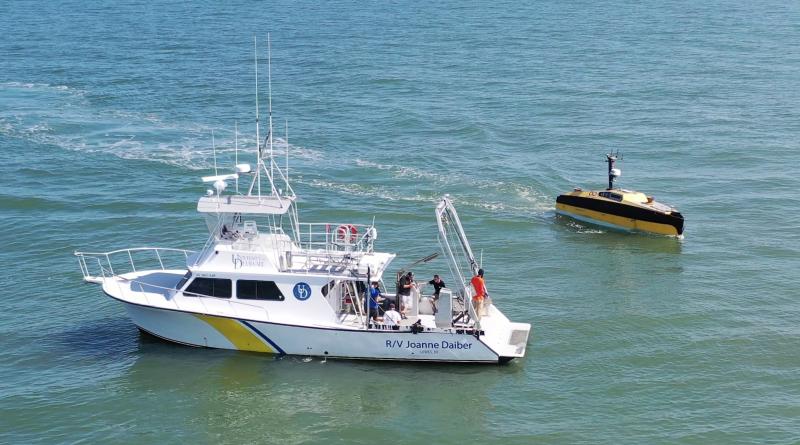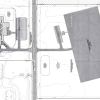Robot craft used to locate sunken tugboat
University of Delaware staff and professors pitched in to help locate a recently sunken tugboat near the mouth of the Delaware Bay using a robot boat equipped with cutting-edge marine survey equipment.
In an interview Dec. 16, Lt. Hunker Stowes, spokesperson for the U.S. Coast Guard’s 5th District Public Affairs office in Baltimore, Md., said the tugboat Miss Aida sank Dec. 14, approximately two nautical miles north of Cape Henlopen State Park in the mouth of the Delaware Bay.
He said the tugboat Dory was towing Miss Aida when a wave broke the windshield of Miss Aida, causing it to sink in approximately 65 feet of water.
According to an October story by the UDaily, University of Delaware’s College of Earth, Ocean and Environment received four autonomous surface vessels – robot boats – earlier this year. The boats were donated by Ocean Infinity, a marine robotics company based in Austin, Texas, for testing in real-life applications. The story says the ASVs are 24 feet long, can run continuously for up to six days, are designed to cover big areas and are equipped with cutting-edge information-gathering technology.
Art Trembanis, a professor at CEOE’s School of Marine Science and Policy in Lewes, said he was in Rehoboth Bay using sonar to look for ghost pots when he got a call asking if he wanted to use the new boats to help find the tugboat. Jumping at the chance, he said the search mission was the first time he or his students used the robot boats for something other than practice.
Trembanis said the robot boats aren’t completely unmanned – there’s a shoebox-sized control panel operated by a person on a support vessel. The operating systems are very complex, and if Ocean Infinity hadn’t allowed the college to use the vessels, the students wouldn’t have access to the technology because it would be cost prohibitive, he said, estimating one boat costs as much as $2.5 million.
Trembanis said the robot boats are designed for marine survey tasks that are dirty, dull and dangerous. He said they’re much more efficient than human marine surveying because they are designed to drive in a straight line.
Trembanis said it took a few hours to mobilize the boats and about two hours to find the sunken tugboat. He said it was important to find the vessel and set up a signal as soon as possible for two reasons – it’s possible the boat hadn’t sunk all the way to the bottom and was floating just below the surface of the water, and even if the boat was on the bottom, it could move more before finding its final resting place.
“Time was of the essence. The longer a boat is out there, the uncertainty just grows,” said Trembanis. “I’m glad we could help.”
In addition to the team from the University of Delaware, Stowes said Lewes Fire Department members and Delaware Department of Natural Resources and Environmental Control police participated in locating the sunken tugboat. He said recovery operations and planning are ongoing.
The Mariners’ Advisory Committee for the Bay & Delaware River issued a notice Dec. 16 advising mariners that a signal had been established to mark the wreck. The notice says the depth over the wreck is approximately 40 feet and it is located near Harbor of Refuge.
Chris Flood has been working for the Cape Gazette since early 2014. He currently covers Rehoboth Beach and Henlopen Acres, but has also covered Dewey Beach and the state government. He covers environmental stories, business stories and random stories on subjects he finds interesting, and he also writes a column called Choppin’ Wood that runs every other week. He’s a graduate of the University of Maine and the Landing School of Boat Building & Design.





















































